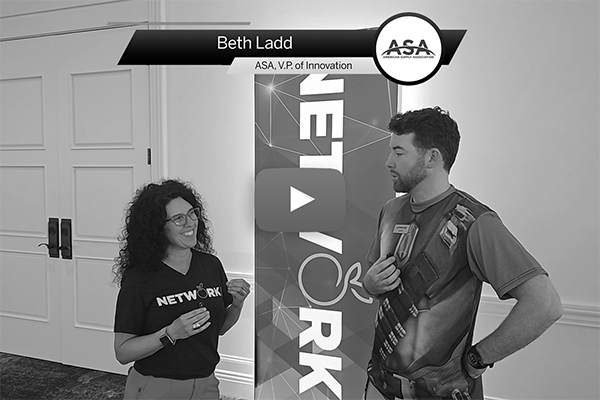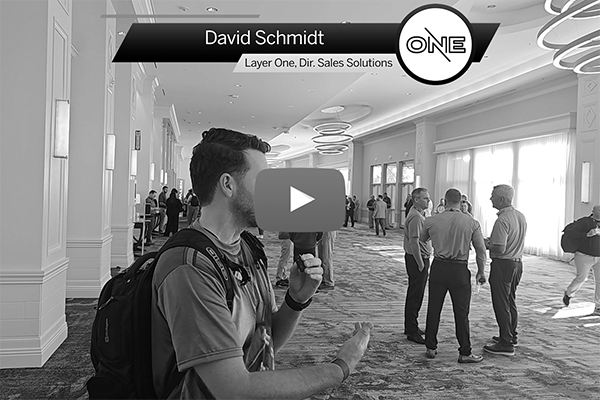LIBRARY
Explore insights on eCommerce and digital platforms for manufacturers and distributors in PHCP, PVF, HVAC, Electrical, Wire & Cable, and more.

As Contractors Consolidate Do Relationships Matter
Chances are one of the service trucks you have seen drive by has recently changed hands. Private equity investors have purchased nearly 800 HVAC, plumbing, and electrical companies since 2022.
B2B eCommerce
Digital Strategy

Why are we just doing this now?
Not feeling ready to bring in an outside company is common. But waiting for internal perfection is a recipe for missed opportunities and prolonged inertia.
Digital Strategy
B2B eCommerce

Healthy Site Search is Business Critical
Everyone knows site search for an online store should work “well,” but how strongly does it impact revenue?
Site Search
14 Focus Points

VIDEO: Beth Ladd From ASA at ASA Network 23
We talk with Beth Ladd about all the exciting things coming out of ASA including product data transfer between Manufacturers and Distributors.
Video
ASA

What is Search Intent?
Subtleties in eCommerce product searches can indicate a variety of meaning and desired results.
Site Search
14 Focus Points

VIDEO: Dean Mueller From DSG at ASA Network 23
We Talk to Distribution Expert Dean Mueller from DSG.
Video
ASA

Helping Clients with Product Data
Read about some of the tactics Layer One implements to help our clients achieve product data success.
Product Data
14 Focus Points

VIDEO: ASA Network 23 Recap
See interviews and insights from ASA Network 23 in Orlando.
Video
ASA

Are we at a Disruption Point for PHCP Distribution?
Are we seeing a revenue shift away from distributors that don't have an eCommerce offering?
B2B eCommerce
Digital Strategy

DSG Guest Post: Are You Getting the Most from Your eCommerce Solution Partner?
Learn how to evaluate and select the right partner.
B2B eCommerce

Auto Sync Product Data Feeds to PIM
Getting product data from a 3rd party is a great way to provide value to your customers. But how much time and effort are you spending on every import?
Product Data
B2B eCommerce

Optimizely Performance and Stability
Optimizely performance and stability are critical to successful eCommerce. These are the most common reasons for an underperforming or shaky site.
B2B eCommerce
Optimizely

Empower Search (Focus Pt. 4)
More than half of B2B buyers prefer search to navigation. Ensure you're making products easy to find and buy.
14 Focus Points
Site Search

Product Data Quality (Focus Pt. 3)
It's no secret that having quality product data drives sales. The priorities are accuracy, completeness, and consistency, but are you leveraging all dimensions of the data? Layer One takes a holistic look at product data quality with actionable optimization strategies.
14 Focus Points
Product Data

Iterative Thinking (Focus Pt. 2)
A stepped approach to testing and refining through a feedback cycle is key to digital success.
14 Focus Points

Site Performance/Stability (Focus Pt.1)
If your site doesn't operate well customers won't use it and Google will bury it. Regardless of any other features and improvements, a site should first perform and be stable.
14 Focus Points

Distributor eCommerce Now 20 Percent of Sales and Accelerating
Predictions of a post-COVID slump in online usage didn’t materialize for distributors. Instead, all those folks who got used to buying online when they didn’t have a choice have embraced the channel and – apparently – talked their coworkers into joining the digital customer club.
B2B eCommerce
Digital Strategy

The Future of HVAC: Attending the 2023 Auer Expo
Attending the Auer Expo was a fantastic experience that provided insights into the latest developments in the HVAC industry. The event brought together a diverse group of engineers, dealers, industry experts, and manufacturers from around the world, creating a vibrant atmosphere for learning and networking.
B2B eCommerce
Digital Strategy

What Engineers Want from a Manufacturer’s Website
The B2B buying market has changed radically for almost all professions, and engineers are no exception. Here's what engineers said they wanted in their shopping experience, and what may happen if companies don't adapt.
Digital Strategy
B2B eCommerce

Personalization in B2B eCommerce
B2B buying is complex and involves various departments, all while customers want to minimize the time and effort it takes to make purchasing decisions. Learn how to understand your customer on a deeper level using the right data for B2B, B2C, and B2X buyers alike.
Digital Strategy
B2B eCommerce

Processing JSONL
Quick demonstration of JSONL, a data format that is appearing in more and more systems.
SOFTWARE ARCHITECTURE

The Pitfalls of JavaScript Libraries
JavaScript libraries have revolutionized web development by providing developers with powerful tools, frameworks, and pre-built components to expedite the creation of interactive and feature-rich web applications. However, a growing trend of incorporating an excessive number of JavaScript libraries into projects can introduce pitfalls that developers need to be mindful of.
User Experience
SOFTWARE ARCHITECTURE

Dazzlingly Easy Sitecore Content Comparison with Razl
This post introduces a tool called Razl, which is very helpful in moving Sitecore items between environments.
Sitecore

What you need to know about event driven architecture
There are many architectures available to the development teams; in this post we take a look at event driven architecture. Whether building a new system or maintaining an existing system, we'll examine the basic components and the benefits of the design.
SOFTWARE ARCHITECTURE

The Differences Between JSS React Developer Modes
With multiple development modes available, we review the pros and cons to working in disconnected, connected, or integrated mode.
Sitecore

Getting final Sitecore configurations anywhere, anytime, with Sitecore ConfigBuilder
Sometimes you need access to the final Sitecore configuration file, but you can't make use of ShowConfig.aspx
Sitecore

Providing Content Customization
Content Authors deserve more flexibility. Here is how we provide a more dynamic experience.
User Experience
Umbraco
Sitecore

Creating Your First JSS React Application
A step by step guide laying the foundation to building your first Sitecore JSS React application.
Sitecore

Content Security Policy Management in Sitecore
Our new Security Header Accelerator allows marketers to run experiments with an agile mindset more easily.
Sitecore

Prevent XSS Attacks with a Nonce in the Content Security Policy
Cross Site Scripting attacks can be a danger to visitors of your website. This post explains how to prevent them using a nonce in your Content Security Policy.